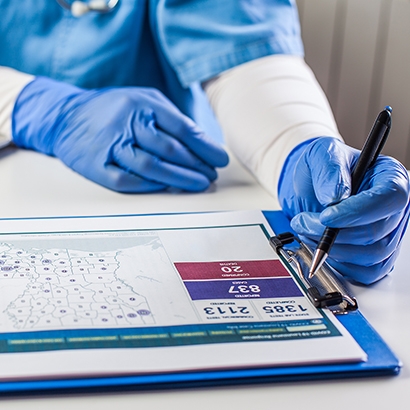Restaurants once seemed immune to eCommerce competition, but the pickup in online food delivery suggests that the industry could get “Amazoned.”
There may never have been a better time to be a homebody.
Enticed by mobile apps and shrinking delivery fees, many consumers are increasingly dining in on any kind of food they desire—not just pizza—via direct delivery. “Consumer demand for online delivery is growing rapidly," says John Glass, Morgan Stanley's U.S. restaurant analyst. Meanwhile, more restaurants, including some large fast food chains, are now making delivery part of their strategies.
As a result, 40% of total restaurant sales—or $220 billion could be up for grabs by 2020, compared with current sales of around $30 billion, Glass and his colleagues conclude in a recent report based on new AlphaWise survey results that look at trends driving the shift, as well as the broader implications for restaurants, internet companies, and consumers and investors.
By 2022, Digital Food Delivery May Comprise 11% of Total Market, vs. 6% Today
What a Difference a Year Makes
Since Morgan Stanley first looked at this space a year ago, “delivery has become a driving force in the restaurant industry and a key investor debate,” Glass says. This year's survey, conducted in April, included nearly 6,000 U.S. consumers, 85% of whom had dined out in the previous six months and 45% of whom had had food delivered. Awareness and usage trended up across all food-delivery platforms.
Here are some other key findings:
- More consumers reported ordering food for delivery in the past six months of this year, 47% vs. 44% over the same period last year.
- 43% of consumers who ordered food for delivery say it replaced a meal at a restaurant, up from 38% in 2016, suggesting incremental cannibalization of dine-in meals.
- Consumer interest in food delivery is up year over year, and across restaurant brands tested, with the greatest incremental interest in coffee and burger chains.
- Share of orders placed online through a delivery service website or app increased to 18%, vs. 15% last year.
Online Orders Take Bigger Share of Food Delivery Market
Not surprisingly, online food delivery is a hot topic within the restaurant industry. “More than 90% of the public restaurant companies we cover have embraced this new segment," says Glass, noting that restaurants have started looking beyond dedicated delivery startups to potentially working with much bigger players in retail, and beyond, who could offer robust logistical infrastructure, greater operational scale and broader consumer reach.
Amazon’s recent entry into the food delivery space is a case in point. A year ago, the online retail giant launched Amazon Restaurants, offering its U.S. user base online ordering and fast delivery from local eateries and restaurants in metropolises stretching from Seattle to Orlando. For many restaurants, such ready-made retail channels could offer exposure to a much larger customer base acclimated to having just about everything they want delivered. Data-driven recommendation engines that already know a lot about what those customers may like, don’t hurt.
For online retailers, meanwhile, the prepared meals and fresh food categories offers a tantalizing gateway into consumers’ daily shopping routines, says Brian Nowak, Morgan Stanley’s U.S. internet analyst. Online delivery times have gotten shorter and shorter, as retailers move ever closer to their customer’s most personalized items. The kinds of things that most people used to drop by the supermarket or drugstore to pick up, can now be ordered online and delivered on the same day, or even within hours. “An online order from a favorite local restaurant, perhaps with some groceries to go with that, expands the online marketplace significantly,” Nowak says.
This may just be the beginning. Combine the restaurant-food digital delivery universe with the network of Whole Foods that Amazon is acquiring, and it could soon epitomize a world where people work from home, have their weekly groceries and daily dinners delivered to their doors, and eat in front of a big-screen TV (ordered online) that’s streaming popular movies or TV shows—all from the same provider.
Online Food Delivery Could Grow by 16% Annual Compound Rate In Next 5 Years
As sales via online delivery channels grow, so might the risk of cannibalization and profit-margin pressure for the restaurant sector, Glass says. The effects will vary. On the whole, online delivery growth should be good news for fast food restaurants, which turn more on quantity of food than quality of on-site experience. Casual eateries face greater risk of cannibalization from reduced margins, as nearly half of consumers surveyed indicated that they order in instead of going to a restaurant.
One slice of the market that may stay immune: pizza. “Our work suggests the overwhelming reason consumers purchase delivery pizza is that they are craving pizza," Glass says.
For more Morgan Stanley Research on the outlook for restaurants and online food delivery, ask your Morgan Stanley representative or Financial Advisor for the full report, “Is Online Food Delivery About to Get 'Amazoned?' " (Jun 25, 2017). Plus, more Ideas.



